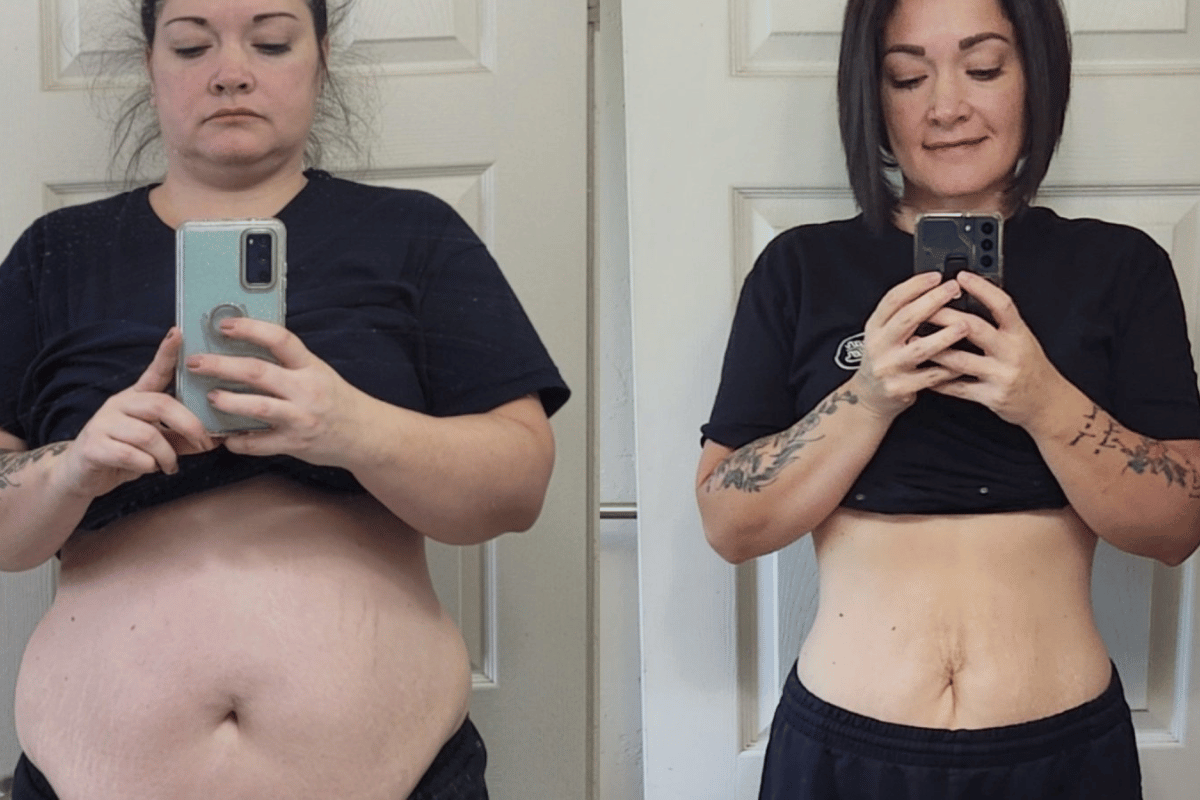As the Yuletide season approaches, finding the best intermittent fasting schedule that harmonizes with the festive spirit while maintaining health goals can be challenging. Among the myriad of fasting patterns, four have stood out as accredited and effective for balancing celebration with well-being. These schedules offer flexibility and are adaptable to the seasonal demands of feasting and festivity. In the following text, we will delve into each of these schedules, outlining their structure and benefits, to help you navigate the holiday season with vitality and joy without compromising on the festive indulgence.

best intermittent fasting schedule
As the scent of gingerbread and the warmth of mulled wine begin to fill the air, the Yuletide season beckons us into a world of festive delights and culinary indulgence. Yet, amidst the cheer and conviviality, maintaining a balance between revelry and wellness can often seem like a daunting task. This is where the concept of intermittent fasting comes into play, promising not just weight management but a sustainable lifestyle rhythm that resonates with the holiday spirit.
Embracing the holiday season with health in mind doesn’t mean forgoing the joy of Christmas banquets or New Year’s feasts. Instead, it’s about integrating the best intermittent fasting schedule into your holiday routine, allowing you to savor every moment of celebration without compromising your health goals. By aligning your eating patterns with the intermittent fasting approach, you can navigate the festive period with a sense of control and mindfulness.
The wisdom of intermittent fasting lies in its simplicity and adaptability, making it a perfect companion for the season’s festivities. Whether it’s a family dinner or an office party, you can tailor your fasting schedule to accommodate the merriment, ensuring that you partake in the joyous occasions while keeping your wellness in check.
In the coming sections, we’ll explore how to weave the best intermittent fasting practices into the fabric of Yuletide traditions, ensuring that your holiday season is both merry and health-conscious. Stay with us as we unfold the secrets to a balanced and joyful festive period.
Identifying the Holiday Health Hurdle
The holiday season is synonymous with a surge in indulgence, where lavish spreads and tempting treats are the norm. This festive abundance, while delightful, presents a significant health hurdle for many. The challenge lies in balancing the celebratory feasting with mindful eating practices. Here, the best intermittent fasting schedule becomes a pivotal tool, allowing individuals to enjoy the season’s pleasures while maintaining a structured eating plan.
As we indulge in the seasonal gastronomy, the importance of a balanced intermittent fasting routine becomes ever more apparent. It’s not just about weight control; it’s about nurturing a healthy relationship with food during a time when overindulgence is all too easy. Recognizing the need for a plan that accommodates the increased frequency of social gatherings and rich meals is the first step towards a healthier holiday season.
Unveiling the Top Intermittent Fasting Strategies
The 16/8 Method: The Daily Balance
The 16/8 method stands out as a highly adaptable fasting strategy, particularly during the holiday season. This approach involves fasting for 16 hours and eating within an 8-hour window, which can be aligned with festive events and family dinners. The American Journal of Clinical Nutrition suggests that this method may improve fat loss and metabolic health, making it an ideal choice for those looking to stay on track with their health goals during the holidays.^[1]^
The 5:2 Approach: Weekly Moderation for Festive Times
Another strategy that garners attention is the 5:2 approach, where you eat normally for five days and reduce calorie intake for two non-consecutive days each week. A study published in the British Journal of Nutrition found that this method not only aids in weight loss but also helps in maintaining muscle mass — a common concern during the overindulgent Yuletide season.^[2]^
Alternate-Day Fasting: A Rhythm of Feast and Fast
Alternate-day fasting is a rhythm that fits well with the ebb and flow of holiday festivities. This pattern allows for a full 24-hour fast followed by a day of normal eating. The New England Journal of Medicine has reported that alternate-day fasting may lead to improved longevity and cardiovascular health, which is particularly beneficial during a time of year when heart health can be put to the test.^[3]^
The Warrior Diet: Aligning with the Season’s Festivities
The Warrior Diet is designed to mimic the eating patterns of ancient warriors, consisting of a long fasting period followed by a short feasting window in the evening. This diet, which encourages eating small amounts of raw fruits and vegetables during the day and one large meal at night, can be particularly convenient for those attending evening holiday events. According to the Harvard Medical School, such an approach can potentially lead to improved insulin sensitivity and increased stress resistance.^[4]^
Insights from Nutritionists and Health Organizations
Nutritionists and health organizations emphasize the importance of personalizing your fasting schedule to fit your lifestyle and health needs, especially during the holidays. The Centers for Disease Control and Prevention (CDC) advise that intermittent fasting, when done correctly, can be a part of a healthy lifestyle that may contribute to weight loss and better metabolic health, as long as individuals do not compensate during eating periods by overeating.^[5]^
Implementing the Fasting Framework
Tailoring the Fasting Schedule to Holiday Events
To effectively incorporate the best intermittent fasting schedule into the holiday season, it’s crucial to plan around key events. For instance, if a big family dinner is expected in the evening, someone following the 16/8 method might choose to start their eating window later in the day to enjoy the feast fully. This flexibility ensures adherence to fasting protocols without missing out on the celebrations.
Tips for Managing Appetite and Energy Levels
Managing appetite during fasting days is essential, especially when faced with the abundance of holiday treats. Nutritionists recommend hydrating with water, herbal teas, or black coffee during fasting periods to help control hunger pangs. Additionally, engaging in light activities such as walking or yoga can boost energy levels and distract from hunger.
Integrating Fasting into the Season’s Social Calendar
Social events are a cornerstone of the Yuletide season, and intermittent fasting should not be a hindrance. By choosing a fasting plan that complements your social calendar, such as the 5:2 approach or alternate-day fasting, you can schedule your fasting days around less busy times. This strategy allows for social engagements on eating days, making fasting feel less restrictive and more in harmony with the festive spirit.
By addressing the holiday health hurdle with a structured yet flexible intermittent fasting plan, you can enjoy the season’s festivities to the fullest while still prioritizing your wellness. The key is to find a balance that works for you, allowing for both celebration and health-consciousness during this joyous time of year.

best intermittent fasting schedule
Conclusion
The festive season, replete with its joys and feasts, can coexist with the principles of intermittent fasting to foster a healthful harmony. By adopting the best intermittent fasting schedules, such as the 16/8 method, the 5:2 approach, alternate-day fasting, or the Warrior Diet, one can navigate the holiday’s indulgences with mindfulness and health at the forefront.
In essence, the key to a balanced Yuletide season lies in the strategic integration of fasting schedules that align with your lifestyle, allowing for celebration without compromising well-being. This approach ensures that the spirit of the season is embraced with vitality and joy, reflecting a journey that is as much about health as it is about festivity.
Navigating Festive Feasting with Intermittent Fasting
Q: How can I adapt the 16/8 fasting method to holiday gatherings? A: To align the 16/8 method with holiday events, plan your eating window around the main festive meal. If dinner is the event’s focus, begin your eating window in the mid-afternoon. This adjustment allows you to partake in the evening’s feast and enjoy socializing without breaking your fasting commitment.
Q: Is the 5:2 diet suitable for the high-energy demands of the holiday season? A: Yes, the 5:2 diet can be suitable as it allows for normal eating during most of the week, providing the energy needed for holiday activities. On fasting days, ensure you consume nutrient-dense foods that support energy levels, and schedule these days for quieter moments of the season.
Q: Can I enjoy traditional holiday meals while on an alternate-day fasting schedule? A: Absolutely. Alternate-day fasting offers the flexibility to enjoy holiday meals on non-fasting days. Plan your fasting days on less eventful days to indulge in traditional meals without restrictions during celebrations.
Q: How does the Warrior Diet fit into a balanced festive season? A: The Warrior Diet’s eating pattern is particularly conducive to evening events, as it involves consuming one large meal at night. This can be advantageous for those attending nightly holiday parties, allowing them to engage fully in the festivities.
References and Further Reading
- American Journal of Clinical Nutrition, “Effects of 8-hour time restricted feeding on body weight and metabolic disease risk factors in obese adults: A pilot study.”
- British Journal of Nutrition, “Intermittent fasting interventions for treatment of overweight and obesity in adults: a systematic review and meta-analysis.”
- New England Journal of Medicine, “Effects of Intermittent Fasting on Health, Aging, and Disease.”
- Harvard Medical School, “Diet Review: Intermittent Fasting for Weight Loss.”
- Centers for Disease Control and Prevention (CDC), “Healthy Weight, Nutrition, and Physical Activity.”